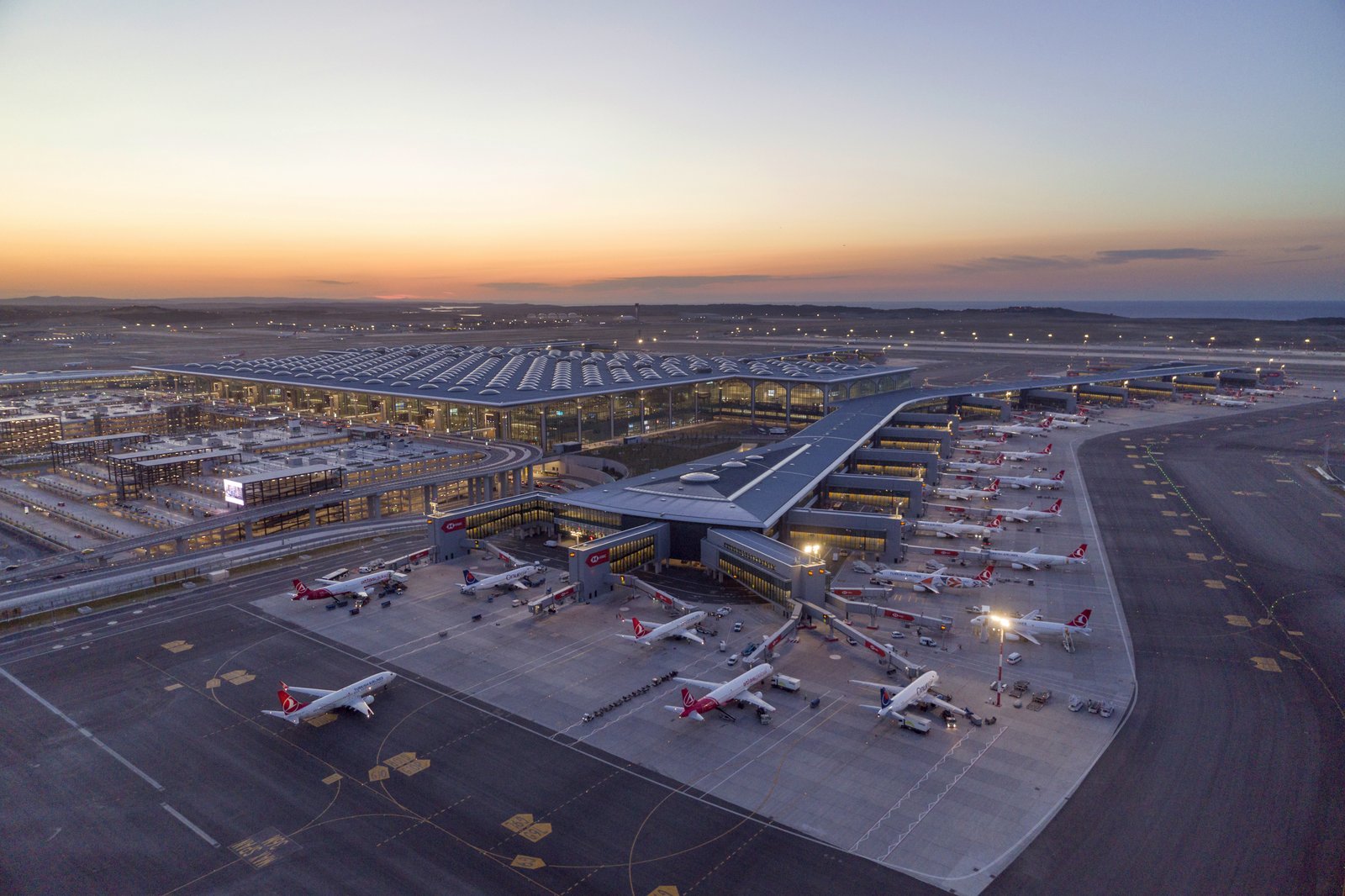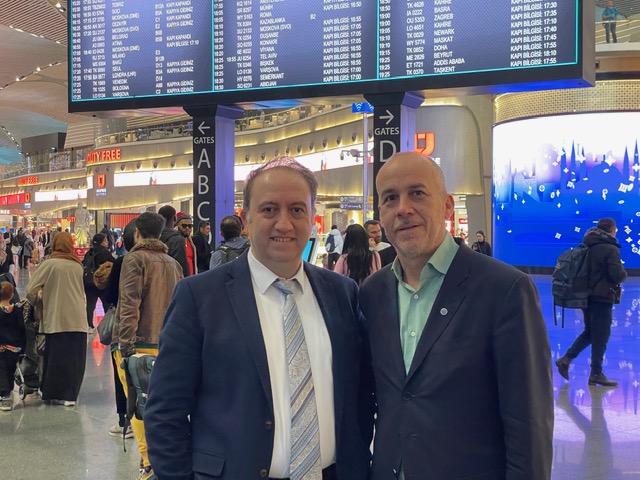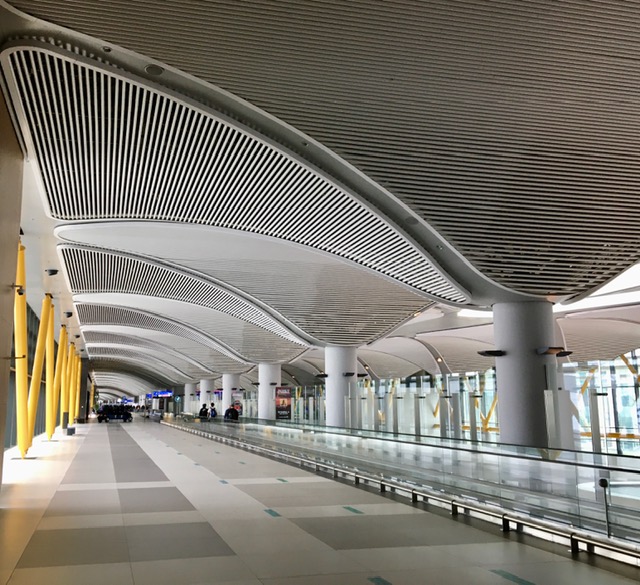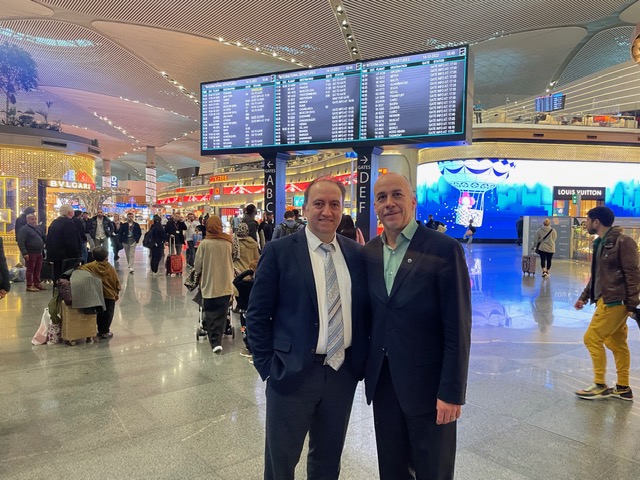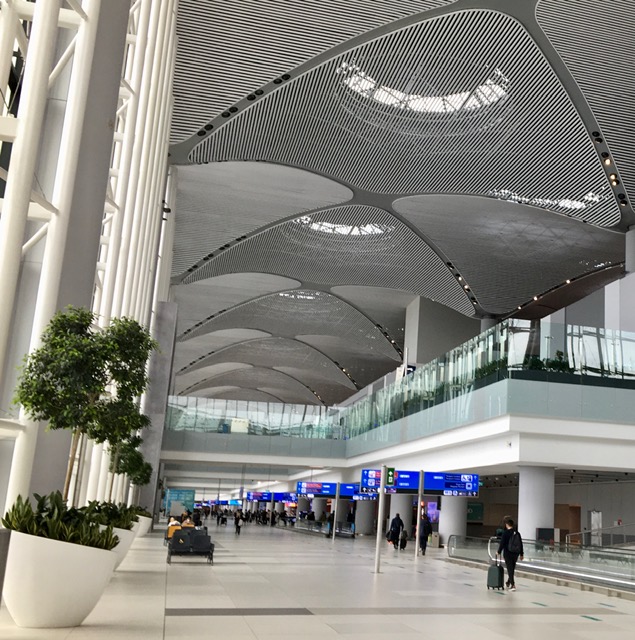By Jeff Peet, ALA News Managing Editor, from Istanbul.
- In terms of the environment, you have made a huge advance in water saving, for example. What are the improvements you have implemented and was that a goal or is it part of a greater plan?
We are committed to the 2050 goals of the industry. When we started this project back in 2014-2015, the first department that was formed was the one dedicated to the environment. Even before the design and planning stages, such area was already in place so the whole project was put in that perspective. But environment to us goes beyond as we have managed sustainability concerns and improvements from the first minute. That has been an issue on the table from day one and what I can say is that no matter how challenging this might sound, we have seen great benefits from this approach. Our building has LEED Gold certification. It is the largest facility in the world that has accomplished that. We are saving more than 20% of water and we are also committed to improve other aspects such as social issues, relations with the community and performance in other utilities. As you are familiar with ACI certifications, we are level 3 in terms of Carbon accreditation and that was obtained in a very short period of time and we will continue on that path. Our terminal is quite big and we are using fresh air and natural light inside to the full extent and that is leading to significant savings in terms of cooling/heating and lightning. Our goal is the greatest energy efficiency so wherever we see an opportunity for that we seize it. We have over 100 environmentally systems integrated into our operating centre that allows us to control all utilities so we keep track of related parameters in a very detailed form. The important thing is that we will not stop there. We will continue improving with air side operation including routing service with the most efficient taxiing for aircraft and that is something we are very serious about.
- When it comes to reporting on sustainability, something that it is a growing trend in the industry, what is the model you are following?
We are reporting about sustainability every year since 2015. That is done by a dedicated team to that important aspect of our operation and it is readily available year after year on our website. It matches the model of the UN on the global sustainability goals. In includes issues relating to workforce, environment, community and training among others
- On the issue of Community Relations and since this is a brand new facility, you are dealing with new stakeholders. How that process has unfolded?
We started the work with our new groups of interest back in 2015. That was almost seven years ago so we have collaborated for several years now. We involved them from the very beginning so they have been part of this project since its planning stage. That has materialized in various projects of different scope and size to assist the communities around this new airport. We have covered areas such as business development, education and initiatives with schools, trade promotion by linking people with our suppliers and aiding them on building networks, for example. Those projects have been successful to the point that they have received awards even in the international arena.
- The new Istanbul airport took almost 5 years to build and that is quite a record for such a project. From the operational point of view, what have been the greatest challenges you have faced?
It took 42 months and yes this is a big airport but that was the intention. Our concession is planned for a capacity of 150 million passengers, 9 runways and two terminal buildings with all the necessary services that need to be provided such as catering and MRO apart from those that are the responsibility of government. I am talking about considerations that are part of this project from its onset. It is a very large and complex operation but we have put in place things like digitalization and that is key to accomplish what has to be done. We are ensuring that everything is connected so that we can act as fast as possible. So far the infrastructure that we have and the one that we will continue to develop give us a lot of flexibility. It is a large facility but with the touch of a button we can shut down everything if need to and we can restart all operations really fast so we have the capability of monitoring all sides of what we do here. In the end, every process is automated and integrated and while that is not a challenge as we have managed to put it in place, we are working very consciously in having all the tools for that to improve in the coming years.
- When it comes to the possibility to make this airport a world hub, how closely are you working with Turkish Airlines which represents 80% of your offer of flights to make the best of that partnership and bring in all the people this terminal was and is being built for?
As you know, airports have many stakeholders and of course among them airlines are the most important. However, there are a lot of other actors such as ground handlers, government agencies and passengers who need facilities and infrastructure to operate and deliver. This airport was built to accommodate the growth of Turkish Airlines, to help that company grow so for us our national airline is part of our own organic growth into the future. They have done that very successfully. They did it while operating from Atatürk airport and including through the pandemic from here as they have great potential as a world carrier. That will continue so we are working hand in hand and that has been the case from day one. That has included training, moving the airport here which was a great challenge and I must add that they have helped us tremendously with a smooth operational performance. Everything has gone ahead as it was planned before we opened this airport and I would say that we are already collecting the fruits of that collaboration and we will persevere as partners in making this airport essential for aviation throughout the world. We are also working with other airlines because Istanbul is a very appealing destination and that is also very important as we are turning this airport a hub.
- Covid-19 provoked the exodus of many people who worked in aviation and as the pandemic is still being overcome in some places bringing in talent has been a huge task due to training requirements. Are you involved in any project to provide yourselves with the sound workforce you need to manage such a complex operation?
When the pandemic started, as a company, our executive leadership made one very wise decision and that was to keep our people. We were followed on those footsteps by Turkish Airlines, the ground handling companies that work with us and most of the stakeholders who have a role to play in the operation of our airport. The pandemic meant for us a time to develop operational scenarios aiding ourselves with our integrated systems in order to define what we needed as part of our greater plan. That planning exercise led us to be able to save resources nowadays on a number of operational issues and those gains we have invested them in our people. Then there was the support from the government in terms of salaries and the focus of that was not just the aviation industry but also others sectors of our economy. In short, during those difficult times we never fired anyone so when the traffic improved everybody was there to handle it. Training continued and we made sure that our team stayed on top of things by refreshing their knowledge so I think we came out of the pandemic even stronger. There is also a lot to come such as a training centre with Airports Council International (ACI) and the International Civil Aviation Organization (ICAO) as our partners. We already have a high school in our premises that provides an especially developed curriculum for graduates to work in aviation and we are working with the President’s office on an internship programme that brought in over one thousand interns last summer. We will continue to develop initiatives like those as that is a trend in our company and will only grow in the future at all levels from airport security aspects to the highest layers of management.
- What are your expectations for the future?
Recent challenges have shown one thing: that Istanbul airport is resilient. Whatever that impacts aviation greatly it affects us in the very same way and that is very positive as we have demonstrated already that we can overcome great difficulties. We have a lot of strength and that is crucial for what we will be facing in the following years. We have a strategic plan for the next 25 years and it includes the growth of Turkish Airlines and other carriers. Our aim is to catch up and go beyond expectations. ACI and Eurocontrol have warned over infrastructure challenges in this part of the world but we will close that gap. We actually believe we will be at the forefront in Europe so a lot of the capacity needed will be in place here. We are definitely ready for what lies ahead for us. That not only includes passengers but also cargo and general aviation. In ten years from now, we will be seeing numbers here that we never saw in the Turkish aviation sector before. Our key aim is to connect cities, airlines, cargo and people through Istanbul. We continue to look into new routes and be able to connect all aspects of the industry in time for the 100 years of our republic.
- What are the plans you have in mind for air cargo?
When we designed the airport we put the cargo operation at the centre of our project in order to be as accessible as possible on both the land and air sides. On the land side, we developed the necessary highways and we will continue on that path. We also have our own port. Our cargo terminal is located between runways and has 29 positions for aircraft so taxiing is short and turning around times are very brief. The area allocated to cargo has a potential of 5.5 million tonnes cargo capacity. Those currently operating this reality are major players such as DHL, UPS and MNG Turkish, a company that built the largest cargo facility in the world and we expect interest in that part of the aviation business to grow further. Howeve,r we are not just looking for freight forwarders or airlines. Our plan goes beyond that as the pandemic showed us the potential of cargo traffic even in the worst realit. For that we see the likes of Amazon, Alibaba and other similar Turkish companies as key players because they bring e-commerce to the centre of the aviation industry. The land side of the business is crucial and there are outstanding possibilities not just for the usual but to bring into our airport activities that can add up to the existing and traditional cargo operations. I am talking about bringing goods here and adding value to them to be sent out by air. Sorting is another field where we see great potential given the network of destinations that have Istanbul as a centre.
- Turkish Airlines has continued to grow quite extensively and in that has not spared the Latin American market. Because of that, Argentina, Brazil, Mexico and Panama are some of the places where one can fly direct from Istanbul. Based on the fact that you as a company that manages an important airport has succeeded in catering to specific audiences such as the Chinese and many others in Africa, is there a strategy to do the same when it comes to Latin America?
Aviation in Latin America is growing really fast and has come back very strongly so, as Istanbul airport, we are encouraging airlines to connect Latin America to other parts of the world through our city to enable more growth of passengers coming to Turkey from that region. Turkish Airlines is working hard towards that goal. Now and as an airport, we have plans to do that as we can easily cater to a Latin American public and tailor our services to it. The idea would be to make our airport more Latin American friendly so that people travelling to or through Istanbul feel comfortable using our facilities. I am talking about passengers flying from Brazil to China or from any other location in that part of the world. There are benefits from that such as our strong location and competitive tariffs compared to Europe, for example. Also, at our airport we do not have any restrictions and we can plan any operation according to any party’s needs. There are no limits in terms of using our facilities and what we have to offer. Such strong elements added to the growing connectivity are assets and all we need to do is get to know and understand each other better. We need to comprehend what the specific needs of our prospective Latin American clients are and plan based on that because we can easily do it. As I mentioned earlier, here there are no limitations and we have a very friendly business approach to possibilities that might arise from Latin America.
- Turkey and Istanbul in particular as the jewel of your image can be seen as being at the centre of the world geographically. The truth is that from your city one can fly easily to many others that are hard to reach. That applies to Latin America in the sense that there are places in that continent to where it is difficult even to get to from Europe. What is your take on that?
I think that has to be seen as us being interested in showing our hospitality which is an essential part of our culture so that mirrors that key aspect of our country. We welcome anybody to come to Istanbul as a way to even reach another destination because we see that as a growing need among the public and businesses in general. Aviation is becoming stronger and also our role in it. It must be added that we feel very comfortable in that position which is about connecting people who need that. Our aim is to provide what the best of what the aviation industry exists for and there is a big potential where we see ourselves adding to in the future.
- What was the role of Istanbul airport in the aftermath of the most recent and powerful earthquake that struck Turkey?
iGA Istanbul Airport became a Logistics Center during devastating earthquake. On the first day of the earthquake, the iGA Istanbul Airport Disaster Relief Team with 94 personnel and 43 vehicles moved to the earthquake zone, our Disaster Relief Team continued to meet the primary needs of the people at the earthquake site. Cargo flights to the atrea affected by the earthquake continues and the needs of passengers who arrive at our airport via evacuation flights are being met. Search & rescue teams leaving for/arriving from the region are being attended too. More than 200 volunteer personnel, including Operation, Technical Services, Security and ARFF (Airport Rescue and Fire Fighting) teams, went to the earthquake zone under the coordination of AFAD.
As iGA Istanbul Airport, we have tried to do our best to heal the wounds after the devastating earthquake that has left our country grieving. Our teams made it to Hatay Airport the day after the devastating earthquake and quickly initiated maintenance work to repair the runway, which had been left unusable. iGA Istanbul Airport’s construction and technical teams worked continuously for 96 hours, intervening at all points where the runway was damaged. The repair work on the runway was completed on February 12th Sunday and Hatay Airport was ready for operation. Hatay Airport was closed to traffic due to fragmentation and cracks in 45 different points of the three-kilometer runway. The airport, is approximately six kilometers away from the city center and of critical importance for the timely arrival of aid to the region.
Also passengers who were transported from the earthquake site to our airport via evacuation flights were provided with complimentary services such as food & water, buggy, electric wheelchairs and strollers, APS, and 24/7 metro and taxi.
While our country is trying to heal the wounds caused by the earthquake that centered in Kahramanmaraş, which affected 11 provinces and were described as the biggest disaster of the century; iGA took action last week to build a container city to shelter disaster victims who have been left homeless in Hatay, one of the provinces most affected by the earthquake.
The 350-container city will be built on 30 acres of land next to the Hatay Provincial Gendarme Command and allocated to iGA Istanbul Airport by Hatay’s Governor’s Office, and is planned to shelter 350 families. The entire installation and hardware work on the container city will be covered by iGA, and we have been hosting earthquake victims from March 8, after having started construction on February 13. 89 personnel and 34 construction machines are working 24/7 at the container city, where the work continues at a great pace.
Each of the 21 square meter containers, which were shipped from Istanbul between February 20 and 26, contains furniture, showers, toilets and kitchen counters and each container can meet the temporary accommodation needs of a 5-6-person family. The container city will also have facilities such as dining halls, kitchens, laundry rooms, playgrounds, and prayer rooms.
- What have been the challenges you have encountered in order to contribute to overcome this great tragedy?
We all know that airports are critical infrastructures and its operations are essential for national survival or economic survival. iGA İstanbul Airport became really critical in this devastating times and it was essential for us to receive or send aid to the affected areas. Our airport has been used during relief efforts following earthquake and it was challenging to coordinate all the evacuation flights from/to devastated earthquake cities to Istanbul alongside with processing a large amount of cargo transfers from all over the world.
The challenges we have faced to overcome this tragedy have been related to receiving and coordinating aid; as a Hub for rescue and evacuation process; and as a logistics centre with storage needs.
Our airport’s preparedness has been a key factor in the nature and outcome of the response and recovery capabilities and that has been one of the biggest concerns we have had. That is where our focus has been alongside with the coordination and cooperation among airports from the earthquake affected areas which is also essential.

